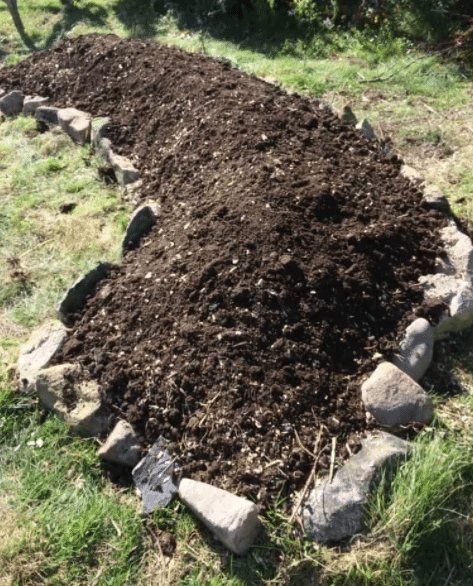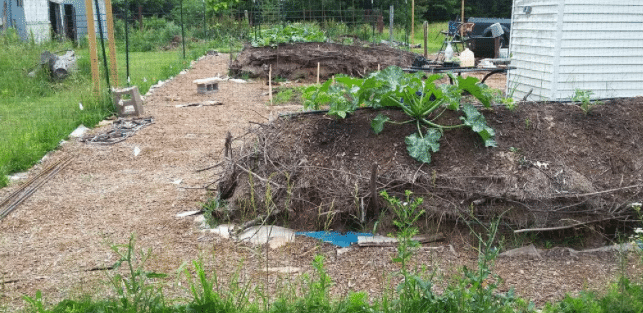Are you wondering if the hugelkultur bed is for you are not? If you do it properly, then why not? Using this process of lifting the beds can bring many advantages for you, especially if you want to have control over your finances.
But what is hugelkultur, and how will it bring you advantages? And does it take nitrogen from your soil and create problems for you further.
Let’s have a look at the hugelkultur method of gardening. This article will mention the material is adequate from your soil bed, mixes required for your soil bed, etc.
Contents
What Do You Mean By Hugelkultur?

This sounds hilarious; it is a german term for hill mound. If done originally, you would have to dig up a not-too-deep pit and slowly make a narrow and long mound. Then, on the top of it, start mounding the logs, making a tall and long structure, which will have a lot of space for planting, much more than any other planting bed.
In the beginning, add bulk by the logs. And after they slowly decompose and the hills slowly start sinking, the logs, which are now rotten, will hold additional moisture. So when you plant out entirely, there will be less erosion of the soil’s top layer, and then it creates a small ecosystem.
When you make your hugelkultur bed, you will have to take wood logs to stuff your hugelkultur raised beds. However, like food leftovers, grass clippings, and coffee grounds, other stuff can also be stuffed if the wooden log cannot decompose in a fast manner.
Advantages And Disadvantages Of Hugelkultur Beds

There are a lot of advantages related to hugelkultur beds. Some of them lined out for you:
- Decreases watering frequency
- It can utilize waste wood or avoid it from needing the requirement of burning in the burning pile.
- Boosts the surface area for your garden beds.
- It is a cheap method of making a tall garden bed.
Everything has a positive and a negative aspect. This means it also has a negative aspect.
Of course, this bed might also be able to decrease watering at a certain level. Still, most of its water reduction advantages will not be of any use till the woods are beginning to rot till the point where it starts to become like a sponge and might share the water with the medium growing around it. Which can also take years if you are beginning with large wooden logs.
The mounds are built in the original hugelkultur ways, which will boost the surface area onto your bed. But if you want to build mounds that will rise on the top of your bedroom walls, then you will not have a similar increased area or might not be able to have any area at all.
Does Rotting Wood Take Away The Nitrogen?

The most general difficulty reported by experienced people is that the decomposing wood steals away the soil’s nitrogen. However, reports of failure are also widespread.
Would you mind looking at the amount of soil you have applied on the top of the bed in such matters?
It would be best if you had three-fourth of the materials in your mounded beds. In contrast to wood, the only soil will have all kinds of experience regarding nitrogen loss. Therefore, your target must be to limit the use of soil against that wood.
The Process Of Layering Hugelkultur

Now that you know a lot about hugelkultur and its advantages and disadvantages. Let’s look at the process of framing it
- Frame it nicely
- Begin from the bottom
- Begin working from your woods
- Find the proper woods
- Stuff it with growing medium
- Plant and mulch it properly
Conclusion
So, now that we know about hugelkultur, its advantages and disadvantages, and its process, it is time for you to go ahead and try it. It is not as difficult as it seems to be. I hope this article has been proven helpful to you.